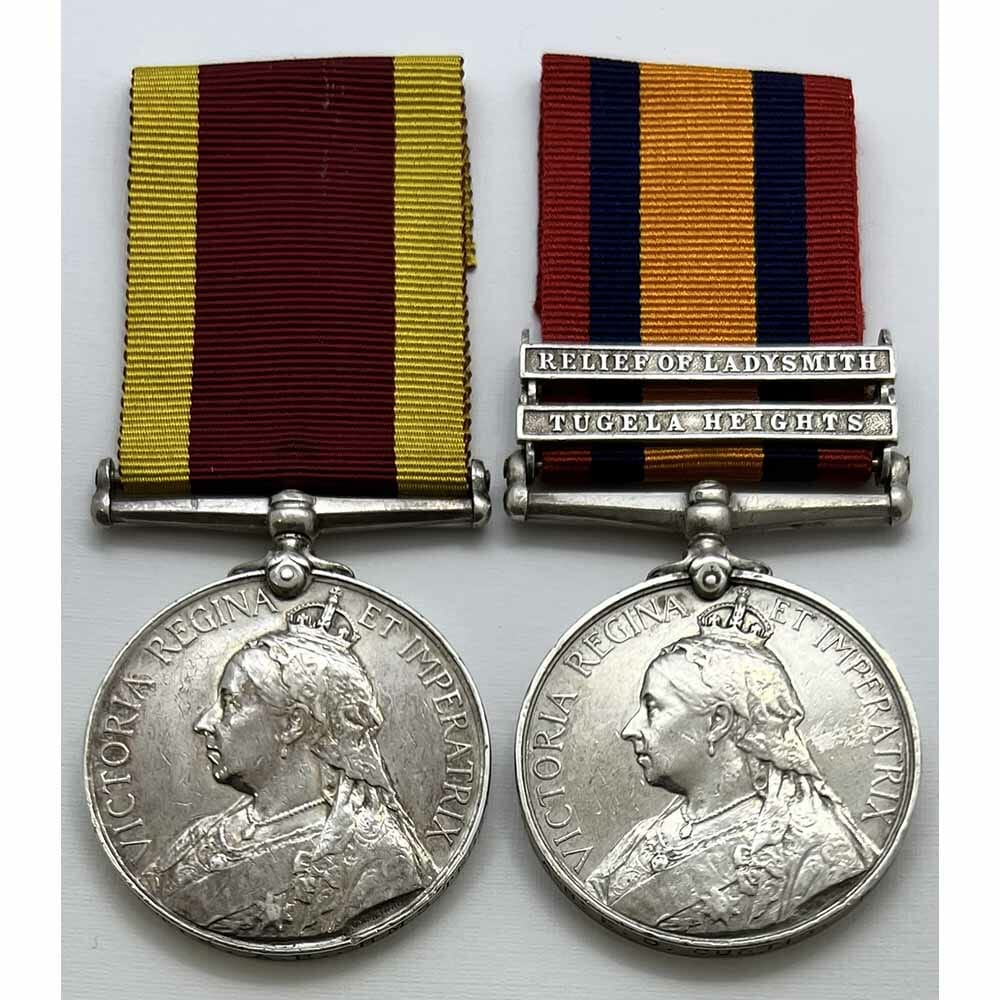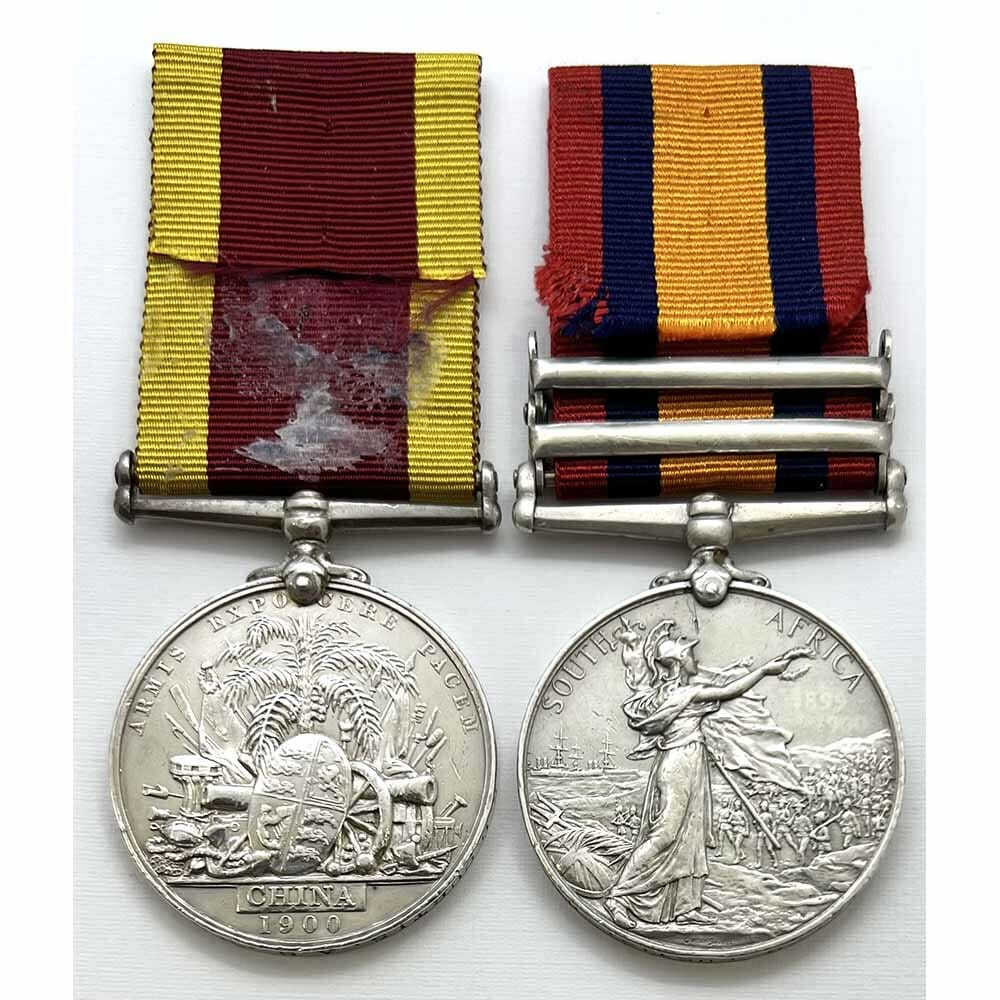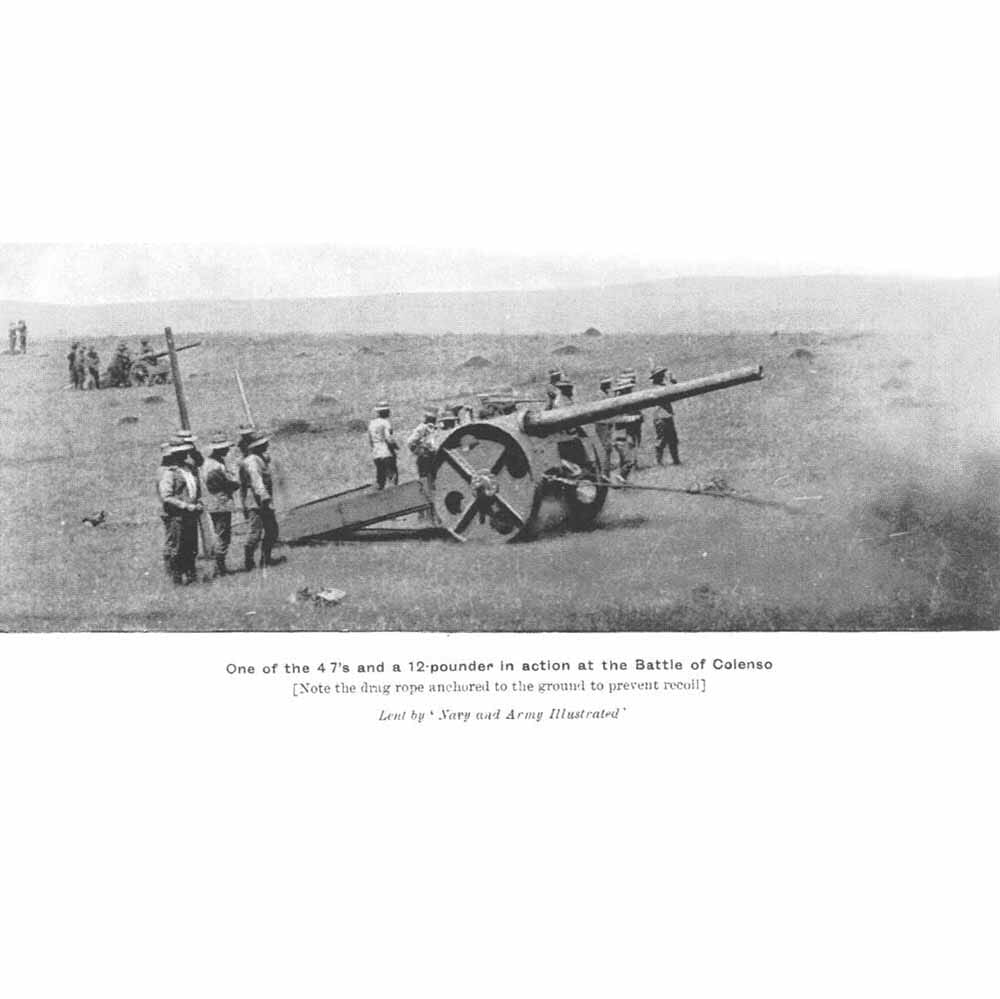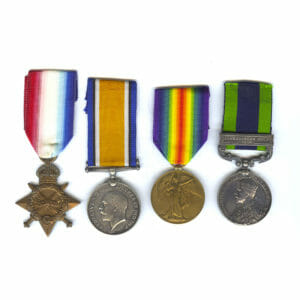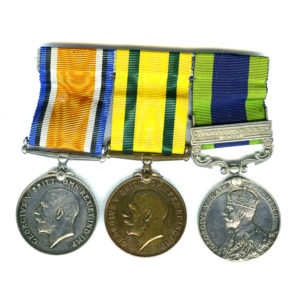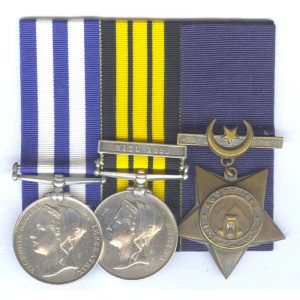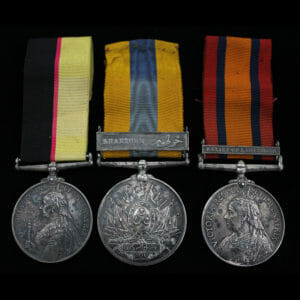Description
Queen’s South Africa Medal, 2 bars, Tugela Heights, Relief of Ladysmith, China 1900, no bar, Edgar Douglas Curtis, HMS Terrible. Went ashore with the Ship’s guns during the Boer War with the Naval Brigade.
A 15 year old Seaboy when he first joined the Navy, 2 days after turning 15, who would serve in both the Boxer Rebellion of 1900 and Boer War in South Africa, where he was detached from the ship to go ashore with the Naval Brigade of HMS Terrible, accompanying the Ship’s guns to earn 2 bars to his medal.
During this time he was part of the crew of one of the two 4.7 Inch gun’s to be taken from the ship, some of the other crews were more fortunate to be handling only a 12-Pounder Gun, which was a mere 500 Kilograms in weight, however the giant 4.7 Inch Gun weighed over 2,000 KG, and this was the first time they could be taken in to the field when Captain Scott of HMS Terrible improvised a genius travelling carriage, tugged along by up to 32 oxen. This allowed the British Forces to finally turn the tide of battle, as they were being consistently out gunned and out ranged by the Boers who already had 155mm Creusot “Long Toms” which were at the time the longest range weapons deployed in the war.
Later in his career, whilst a Leading Seaman, he went missing and was declared a Deserter, upon recovery he was demoted and spent 42 days in prison with hard labour.
Edgar Douglas Curtis, was born on 19th September 1878 in Alderbury, Wiltshire. He was the son of Frank Curtis, a Shoemaker, and Sarah.
Having been a young “Seaboy” he first joined the Royal Navy on HMS Boscawen as a Boy 2nd Class on 27th September 1873.
He signed his papers for 12 years on 19th September 1896, only 2 days following his 15th Birthday.
He immediately saw a number of ship’s postings, HMS Boscawen, 1893-94, HMS Alexandra, 1894-5, HMS Volage, 1895, HMS Inflexible 1895, HMS Excellent 1895-96.
HMS Australia 1896, HMS Victory I, 1896, HMS Volage, 1896, HMS Excellent, 1897-98.
He first joined HMS Terrible, as an Able Seaman, on 24th March 1898, and served on board through the China and Boer Wars until 24h October 1902.
During the Boer War, he is listed as one of the men with No 2 4.7 Inch Gun, under the command of Lieutenant Hunt (HMS Forte) and Midshipman Troup.
Captain of the Gun was Chief Petty Officer Stephens, with 2 Petty Officers, 1 Leading Seaman and Seaman Curtis amongst the other 21 Able Seaman.
There were only 2 troops of 4.7 Inch Guns from HMS Terrible, which was a serious and huge cannon, originally not made to be moved, and used as mounted coastal artillery or bolted down on a ship.
However Captain Percy Scott of HMS Terrible first improvised some timber static siege mountings for 2 4.7 Inch guns from the Cape Town Coastal Defences, to finally counter the Boers “Long Tom” gun during the Siege of Ladysmith, as previous to this the British Forces had been consistently outgunned by the longer range Boer Artillery.
He then improved on this design and improvised a travelling carriage for all 4.7inch guns to remove them from their typical static ship mountings to supply the army with such a mammoth weapon for use in the field.
The crews needed were extensive, in total Seaman Curtis’s group totalled 27, they also required up to 32 oxen to move the guns as they weighed upwards of 5,000 pounds.
During his tie on HMS Bedford in 1905, he reached the rank of Leading Seaman.
However a slight blemish on his otherwise good record of service, was when he was Leading Seaman of HMS Pembroke in June 1907, when he suddenly Ran from his posting, and was branded as a Deserter from the Royal Navy.
After about a month absence, he was finally caught, and sentenced on 25th July 1906 to 42 days of Hard Labour and imprisonment for Desertion. He was immediately reduced to Able Seaman again.
Upon being released he finished out his terms of service on 18th September 1908.
It was later noted that his service record was requested to be sent to the Metropolitan Police Office in late 1908.
He later died in Wandsworth, London during September 1926 aged only 48.
